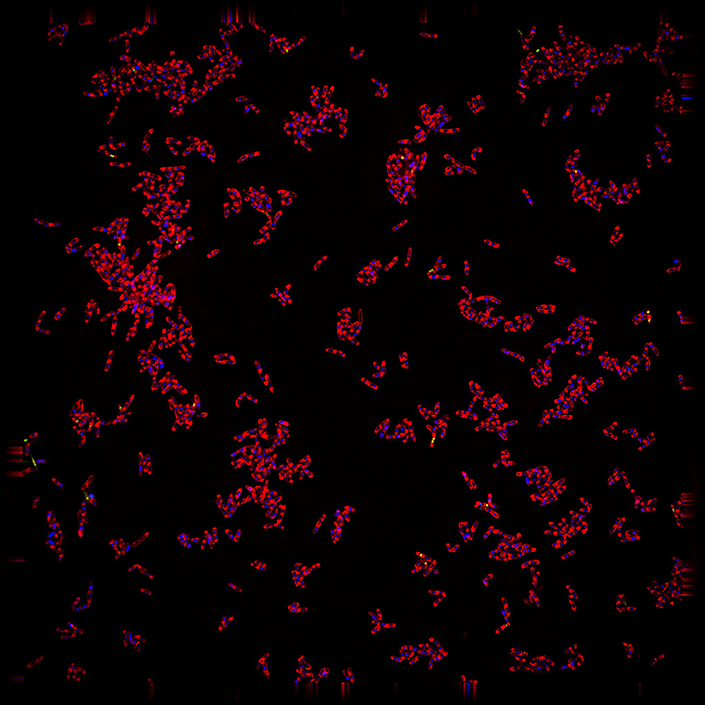More than 10 million individuals were infected with tuberculosis in 2022, making it a major worldwide health concern. The bacterium that causes “TB” can spread through the air and into the lungs, causing fever, exhaustion, weight loss, chest pains, and a persistent cough. Even though infections are more widespread elsewhere in the world, a severe TB outbreak that is now occurring in Kansas has claimed two lives and grown to be one of the biggest in US history.
Antibiotics are normally used to treat tuberculosis, but the emergence of drug-resistant forms has made the need for novel treatment candidates imperative.
A study detailing the innovative use of artificial intelligence to screen for antimicrobial chemical candidates that could be turned into new tuberculosis medicinal therapies was published in the Proceedings of the National Academy of Sciences. Researchers from the Center for Global Infectious Disease Research at the Seattle Children’s Research Institute, Linnaeus Bioscience Inc., and the University of California San Diego spearheaded the study.
A biotechnology firm situated in The challenge of comprehending how novel medications function against Mycobacterium TB, the bacteria that causes the disease, has historically made the hunt for new tuberculosis drug targets using conventional laboratory methods laborious and time-consuming.
The challenge of comprehending how novel medications function against Mycobacterium TB, the bacteria that causes the disease, has historically made the hunt for new tuberculosis drug targets using conventional laboratory methods laborious and time-consuming.
The creation of “MycoBCP,” a next-generation technology funded by the Gates Foundation, is detailed in the recent PNAS research. In order to overcome conventional obstacles and provide fresh perspectives on Mycobacterium tuberculosis cells, the novel approach combines BCP with deep learning, a form of artificial intelligence that makes use of neural networks that resemble brains.
This is the first time that this kind of image analysis using machine learning and AI has been applied in this way to bacteria,
Tuberculosis images are inherently difficult to interpret by the human eye and traditional lab measurements. Machine learning is much more sensitive in being able to pick up the differences in shapes and patterns that are important for revealing underlying mechanisms.
Joe Pogliano
The MycoBCP technology was developed over two years by study lead authors Joseph Sugie and Diana Quach, who trained AI tools called convolutional neural networks using over 46,000 images of TB cells. Both Sugie and Quach are currently at Linnaeus Bioscience, and they both received PhDs from the Shu Chien-Gene Lay Department of Bioengineering and finished postdoctoral appointments in the Department of Molecular Biology’s Pogliano labs.
To create BCP for mycobacteria, Linnaeus collaborated with Tanya Parish, a tuberculosis specialist at Seattle Children’s Research Institute. The team’s TB research capabilities have already been greatly enhanced by the new approach, which has also assisted in identifying the best candidate compounds for medication development.
With a technology created at UC San Diego, Linnaeus Bioscience was founded in 2012 with the goal of revolutionizing our knowledge of how antibiotics function.
Joe and Kit Pogliano were able to introduce the BCP technology into the market by establishing Linnaeus Bioscience in the local biotechnology area of San Diego. This gave other businesses access to the technology. Samples from all across the world are now sent to the company for quick analysis and discovery of novel bacterial medication candidates.
Pogliano attributes the company’s success and expansion to the biotechnology community, particularly to its early residence in the San Diego JLABS incubator, which helps start-up biotech businesses.
Source: UC San Diego Today
Journal Reference: Quach, Diana, et al. “Deep Learning–Driven Bacterial Cytological Profiling to Determine Antimicrobial Mechanisms in Mycobacterium Tuberculosis.” Proceedings of the National Academy of Sciences, vol. 122, no. 6, 2025, p. e2419813122, DOI: https://doi.org/10.1073/pnas.2419813122.
Last Modified:




